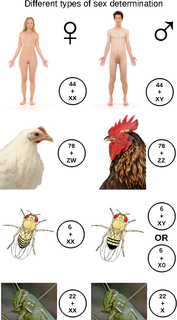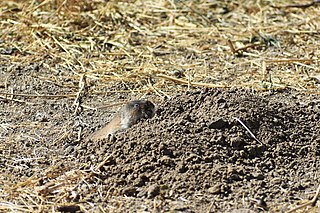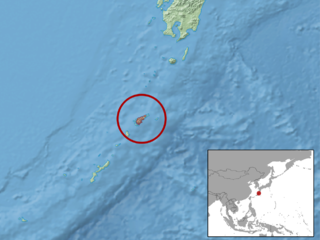
The XY sex-determination system is a sex-determination system used to classify many mammals, including humans, some insects (Drosophila), some snakes, some fish (guppies), and some plants. In this system, the sex of an individual is determined by a pair of sex chromosomes. Females have two of the same kind of sex chromosome (XX), and are called the homogametic sex. Males have two different kinds of sex chromosomes (XY), and are called the heterogametic sex.

A sex-determination system is a biological system that determines the development of sexual characteristics in an organism. Most organisms that create their offspring using sexual reproduction have two sexes.

The Y chromosome is one of two sex chromosomes (allosomes) in therian mammals, including humans, and many other animals. The other is the X chromosome. Y is normally the sex-determining chromosome in many species, since it is the presence or absence of Y that determines the male or female sex of offspring produced in sexual reproduction. In mammals, the Y chromosome contains the gene SRY, which triggers male development. The DNA in the human Y chromosome is composed of about 59 million base pairs, making it similar in size to chromosome 19. The Y chromosome is passed only from father to son. With a 30% difference between humans and chimpanzees, the Y chromosome is one of the fastest-evolving parts of the human genome. The human Y chromosome carries an estimated 100–200 genes, with between 45 and 73 of these being protein-coding. All single-copy Y-linked genes are hemizygous except in cases of aneuploidy such as XYY syndrome or XXYY syndrome.

Voles are small rodents that are relatives of lemmings and hamsters, but with a stouter body; a longer, hairy tail; a slightly rounder head; smaller eyes and ears; and differently formed molars. They are sometimes known as meadow mice or field mice in North America.

The Arvicolinae are a subfamily of rodents that includes the voles, lemmings, and muskrats. They are most closely related to the other subfamilies in the Cricetidae. Some authorities place the subfamily Arvicolinae in the family Muridae along with all other members of the superfamily Muroidea. Some refer to the subfamily as the Microtinae or rank the taxon as a full family, the Arvicolidae.

Sex-determining region Y protein (SRY), or Testis-determining factor (TDF), is a DNA-binding protein encoded by the SRY gene that is responsible for the initiation of male sex determination in therian mammals. SRY is an intronless sex-determining gene on the Y chromosome. Mutations in this gene lead to a range of disorders of sex development with varying effects on an individual's phenotype and genotype.

Dosage compensation is the process by which organisms equalize the expression of genes between members of different biological sexes. Across species, different sexes are often characterized by different types and numbers of sex chromosomes. In order to neutralize the large difference in gene dosage produced by differing numbers of sex chromosomes among the sexes, various evolutionary branches have acquired various methods to equalize gene expression among the sexes. Because sex chromosomes contain different numbers of genes, different species of organisms have developed different mechanisms to cope with this inequality. Replicating the actual gene is impossible; thus organisms instead equalize the expression from each gene. For example, in humans, females (XX) silence the transcription of one X chromosome of each pair, and transcribe all information from the other, expressed X chromosome. Thus, human females have the same number of expressed X-linked genes as do human males (XY), both sexes having essentially one X chromosome per cell, from which to transcribe and express genes.
Gonadal dysgenesis is classified as any congenital developmental disorder of the reproductive system in the male or female. It is the atypical development of the gonads in an embryo, with reproductive tissue replaced with functionless, fibrous tissue, termed streak gonads. Streak gonads are a form of aplasia, resulting in hormonal failure that manifests as sexual infantism and infertility, with no initiation of puberty and secondary sex characteristics.

A sex chromosome is a chromosome that differs from an ordinary autosome in form, size, and behavior. The human sex chromosomes, a typical pair of mammal allosomes, determine the sex of an individual created in sexual reproduction. Autosomes differ from allosomes because autosomes appear in pairs whose members have the same form but differ from other pairs in a diploid cell, whereas members of an allosome pair may differ from one another and thereby determine sex.
The Alai mole vole is a species of rodent in the family Cricetidae. It is known only from Kyrgyzstan, where it has been found in temperate grassland in the Alai Mountains. Little else is known about the vole.

Ellobius is a genus of rodents in the family Cricetidae. It is the only member of the tribe Ellobiusini. It contains two of the handful of examples of mammal species that have lost the Y chromosome.
The Transcaucasian mole vole is a species of rodent in the family Cricetidae.

The northern mole vole is a species of rodent in the family Cricetidae. It is distributed over large parts of Eastern Europe and Asia.

The Zaisan mole vole, or eastern mole vole, is a species of rodent in the family Cricetidae. It is found in central Asia.

The creeping vole, sometimes known as the Oregon meadow mouse, is a small rodent in the family Cricetidae. Ranging across the Pacific Northwest of North America, it is found in forests, grasslands, woodlands, and chaparral environments. The small-tailed, furry, brownish-gray mammal was first described in the scientific literature in 1839, from a specimen collected near the mouth of the Columbia River. The smallest vole in its range, it weighs around 19 g (0.67 oz). At birth, they weigh 1.6 g (0.056 oz), are naked, pink, unable to open their eyes, and the ear flaps completely cover the ear openings. Although not always common throughout their range, there are no major concerns for their survival as a species.

The Ryukyu spiny rat is a species of rodent in the family Muridae. Endemic to Amami Ōshima island in the Amami Islands of the Ryukyu archipelago of Japan, its natural habitat is subtropical moist broadleaf forest. The karyotype has an odd diploid number, 2n = 25. Like its relative T. tokunoshimensis, it has lost its Y chromosome and SRY gene.

The Tokunoshima spiny rat is a rodent found only on the island of Tokunoshima in the Ryukyu Islands of Japan. Due to its small habitat, it is considered endangered. It is commonly found in the secondary and primary subtropical moist broadleaf forests of this island. The karyotype has an odd diploid number, 2n = 45. Like its relative T. osimensis, it is one of the few mammals that lack a Y chromosome and SRY gene.
The 2000s witnessed an explosion of genome sequencing and mapping in evolutionarily diverse species. While full genome sequencing of mammals is rapidly progressing, the ability to assemble and align orthologous whole chromosomal regions from more than a few species is not yet possible. The intense focus on the building of comparative maps for domestic, laboratory and agricultural (cattle) animals has traditionally been used to understand the underlying basis of disease-related and healthy phenotypes.













